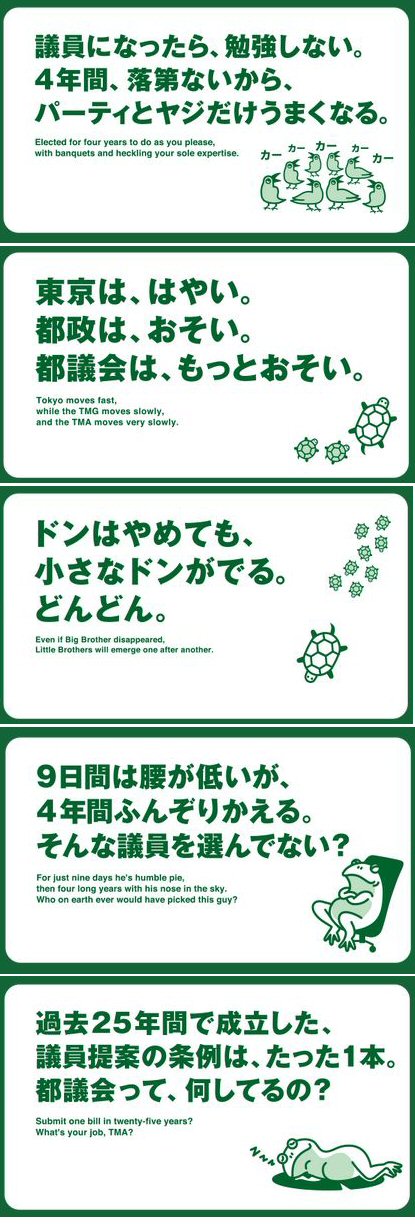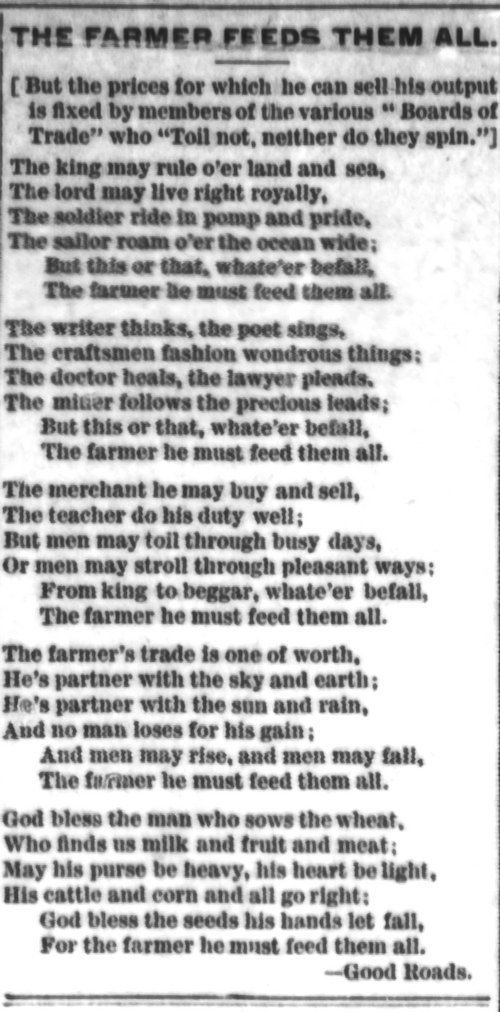Monday, July 03, 2017
Banquets and heckling
Possible positive development in Japan. The US news articles are short on details. All of them say that Yuriko Koike's new party scored a big win over Abe's party in the Tokyo regional government. They call the party "Citizens First", but none of the US or EU media say WHAT the party represents.
Japan Times gives more info. In fact the party is not Citizens First, it's Tokyoites first. The name is transliterated Tomin Faasuto no Kai, where Faasuto is the Jap pronunciation of the English word First.
A more complete description is here.
 Hmm. Sounds familiar.
= = = = =
I should resist but I won't.
Hey Vince, you know what they call ZZZ in Japan?
No, whadda they call it?
They call it ZZZ, but it's ZZZ-san.
= = = = =
Irrelevant sidenote 2. I can't read it, but the Jap text on those cards looks like Haiku. The pattern is right, and the English version is written as a poem. What would happen if an American populist politician used poetic slogans? Probably the same thing that happens when an American populist politician dares to live and breathe. EXTERMINATION.
Still, it might be fun to go down swinging. Haiku obviously wouldn't be appropriate, since the whole point of nationalism is to use your own culture.
The Kansas populists of the 1890s weren't afraid of verse. Here's a fine example that approaches the flavor of the Tomin First poems:
Hmm. Sounds familiar.
= = = = =
I should resist but I won't.
Hey Vince, you know what they call ZZZ in Japan?
No, whadda they call it?
They call it ZZZ, but it's ZZZ-san.
= = = = =
Irrelevant sidenote 2. I can't read it, but the Jap text on those cards looks like Haiku. The pattern is right, and the English version is written as a poem. What would happen if an American populist politician used poetic slogans? Probably the same thing that happens when an American populist politician dares to live and breathe. EXTERMINATION.
Still, it might be fun to go down swinging. Haiku obviously wouldn't be appropriate, since the whole point of nationalism is to use your own culture.
The Kansas populists of the 1890s weren't afraid of verse. Here's a fine example that approaches the flavor of the Tomin First poems:
 Strong stuff.
Strong stuff.
A former TV newscaster-turned-politician, Koike served in key Cabinet and ruling party posts, including defense minister, before becoming the first female leader of Japan's capital in July 2016. Stylish and media savvy, she is a populist whose policies can sway depending on public opinion, experts say. Once called a migratory bird for her repeated party-hopping before settling with the ruling Liberal Democratic Party in 2002, she launched a new party in May for Sunday's election: "Tomin (Tokyoites) First." She has put her nationalistic and hawkish stances on defense on the back burner.Why the English word for First? Japanese has its own words. Maybe the English sounds more powerful? The party's website is tomin1st.jp again using the English. It's a slow loading site but it's worth the wait. It has a rotator of 'cards' on top, with Jap and English captions. The English is excellent, and the meaning is clear. (TMA = Tokyo Metro Authority, TMG = Tokyo Metro Government) I've repositioned some of the cards vertically to fit here:
 Hmm. Sounds familiar.
= = = = =
I should resist but I won't.
Hey Vince, you know what they call ZZZ in Japan?
No, whadda they call it?
They call it ZZZ, but it's ZZZ-san.
= = = = =
Irrelevant sidenote 2. I can't read it, but the Jap text on those cards looks like Haiku. The pattern is right, and the English version is written as a poem. What would happen if an American populist politician used poetic slogans? Probably the same thing that happens when an American populist politician dares to live and breathe. EXTERMINATION.
Still, it might be fun to go down swinging. Haiku obviously wouldn't be appropriate, since the whole point of nationalism is to use your own culture.
The Kansas populists of the 1890s weren't afraid of verse. Here's a fine example that approaches the flavor of the Tomin First poems:
Hmm. Sounds familiar.
= = = = =
I should resist but I won't.
Hey Vince, you know what they call ZZZ in Japan?
No, whadda they call it?
They call it ZZZ, but it's ZZZ-san.
= = = = =
Irrelevant sidenote 2. I can't read it, but the Jap text on those cards looks like Haiku. The pattern is right, and the English version is written as a poem. What would happen if an American populist politician used poetic slogans? Probably the same thing that happens when an American populist politician dares to live and breathe. EXTERMINATION.
Still, it might be fun to go down swinging. Haiku obviously wouldn't be appropriate, since the whole point of nationalism is to use your own culture.
The Kansas populists of the 1890s weren't afraid of verse. Here's a fine example that approaches the flavor of the Tomin First poems:
 Strong stuff.
Strong stuff.
Labels: Asked and sort of answered
